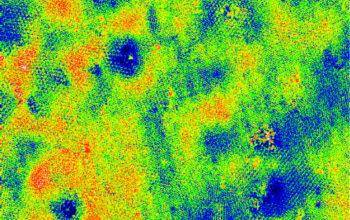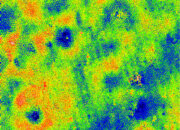Throughout the annals of scientific inquiry, the quest for materials exhibiting negative index refraction has consistently garnered immense fascination. These materials, often cloaked in a mystique akin to the elusive nature of a chameleon adapting to its environment, challenge the conventional paradigms of optics and metamaterials. The recent advances in the field, chiefly focusing on negative index materials, culminate in a sense of optimism that reverberates throughout the scientific community.
Negative index materials (NIMs) serve as a pivotal point where physics converges with engineering, beckoning to redefine our intrinsic understanding of wave propagation and light-matter interaction. In essence, these materials possess a refractive index that is less than zero, which incites a series of counterintuitive phenomena. Light waves, when traversing such media, are compelled to bend in the opposite direction, a behavior reminiscent of an optical mirage that presents an image of what could be, rather than what is.
The implications of harnessing NIMs are as profound as they are promising. One of the most tantalizing prospects is the development of superlenses — devices capable of surpassing the diffraction limit imposed by conventional lenses. Such advancements would allow for imaging at resolutions previously deemed unattainable. The ability to render previously hidden microcosms — whether they be biological structures or nanoscale electronic circuits — could herald a new era in microscopy and imaging technologies.
This revolutionary capacity, however, does not reside in isolation; it reverberates through disciplines far beyond optics. In telecommunications, for instance, the integration of NIMs could facilitate enhanced signal propagation merits, significantly augmenting bandwidth while simultaneously mitigating signal loss. The notion of seamlessly transmitting information through densely packed photonic circuits becomes not just an aspiration but a palpable reality—akin to laying down an unseen infrastructure for the future of information transfer.
Furthermore, as we stride towards a more sustainable future, the application of NIMs in solar energy harvesting brings forth another dimension of optimism. The efficiency of solar cells stands to gain significantly through the implementation of these materials, enabling the capture of broader spectral ranges and the harnessing of diffuse sunlight. Herein lies the metaphor of a sponge soaking up every last drop of life-giving water — NIMs possess the capacity to absorb not just light, but the very essence of renewable energy, transforming photons into electrical energy with unparalleled efficacy.
The quest for practical implementations of NIMs is not without its challenges. Early manifestations of these materials often suffer from inherent limitations, including substantial losses and suboptimal performance across various spectral ranges. However, recent innovations utilizing simple short wire structures exhibit a refreshing simplicity that belies their efficacy. By employing straightforward geometric configurations, researchers have transcended some of the traditional barriers faced in realizing negative index properties. This enlightens the dialogue around materials science, emphasizing the notion that complexity is not always a prerequisite for breakthrough discoveries.
Moreover, the insights gleaned from these shorter wire structures possess a cascading influence on the scalability of manufacturing processes, ushering in new possibilities for industrial applications. The bridges between theoretical physics and practical engineering become more tangible as these findings inspire further exploration and experimentation. Scientists and engineers are now tasked not merely with understanding the intricate nuances of NIMs, but with devising methods to synthesize, fabricate, and integrate them into existing technologies.
In delving deeper into the nuances of NIMs, the discourse unveils a wealth of ongoing research, offering a fertile ground for interdisciplinary collaboration. From the realm of mathematics, where wave theories underpin the operational fundamentals of NIM functioning, to materials science, where the synthesis of unique composites can spawn innovative variations of negative index materials, the collaborative potential is vast and profound. Here lies a reminder of the interconnectedness of scientific disciplines — a symphony of knowledge harmonizing towards a common goal.
Furthermore, the practical ramifications of deploying NIMs in electromagnetic wave manipulation could extend into military applications, resonating with a legitimate call for caution and ethical vigilance. The tendency for scientific discoveries to oscillate between fostering progress and raising ethical dilemmas necessitates a balanced discourse. As NIMs embark on their journey from the laboratory to real-world applications, the reflection upon their dual-use potential must remain at the forefront of the narrative.
In conclusion, the trajectory of negative index materials is steeped in possibilities that stretch across the fabric of modern technology and scientific exploration. They present a metaphorical key capable of unlocking numerous doors — doors that lead to enhanced imaging, telecommunications breakthroughs, and sustainable energy sources. As researchers unveil the potential hidden within these materials, the anticipation swells, much like a burgeoning wave poised to crest and deliver profound change. The endeavor is not merely to harness these materials but to cultivate a broader understanding of their role in shaping a future where the limits of our capabilities in optics and beyond are ceaselessly expanded, inviting a sensation of optimism. Indeed, the good news for negative index materials resonates as a clarion call to all who dare to envision a boundary-free era of scientific discovery.












